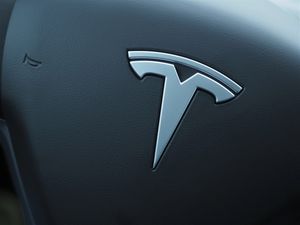
The financial markets are abuzz this week as several bellwether companies across the technology and luxury sectors unveiled their latest earnings reports, sending ripples through investor sentiment and sparking significant stock movements. With the calendar turning to October 23, 2025, the latest quarterly disclosures from tech giants such as International Business Machines (NYSE: IBM), Intel Corporation (NASDAQ: INTC), and NVIDIA Corporation (NASDAQ: NVDA), alongside luxury conglomerate Kering SA (EPA: KER), are providing crucial insights into the health of their respective industries and the broader economic landscape. The immediate aftermath has been a mix of cautious optimism, investor relief, and sharp corrections, highlighting the market's discerning eye for both headline numbers and underlying growth narratives.
These earnings reports are not merely snapshots of corporate performance; they are powerful market movers, influencing sector-wide trends and dictating the pace of investment. From the continued acceleration of AI-driven demand to the nuanced recovery of global luxury spending, these results offer a complex tapestry of opportunities and challenges. Investors are carefully weighing strong revenue beats against concerns about segment-specific slowdowns and lofty valuations, leading to a dynamic and often volatile trading environment as the market attempts to recalibrate expectations for the remainder of 2025 and beyond.
A Quarter of Contrasts: Deep Dive into Earnings and Market Reactions
The third quarter of 2025 proved to be a period of significant disclosures, with IBM and Kering reporting just yesterday, October 22, 2025, and Intel's highly anticipated results slated for after market close today, October 23, 2025. NVIDIA, having reported its Q2 Fiscal Year 2026 results in late August 2025, continues to influence the AI narrative with its forward guidance.
International Business Machines (NYSE: IBM) kicked off the week with a strong Q3 2025 performance, surpassing analyst expectations with an EPS of $2.65 on revenues of $16.33 billion. The company boasted a robust 7% year-over-year revenue growth, fueled by a 9% surge in software and a notable 15% increase in infrastructure, including a 59% jump in IBM Z revenue. Furthermore, IBM's AI book of business now exceeds $9.5 billion, and it raised its full-year revenue growth forecast to over 5%. Initially, IBM's stock saw a modest rise, but investor concerns over slower quarter-over-quarter growth in some segments, particularly its Red Hat unit, led to a subsequent drop of 4.8% in extended trading.
Meanwhile, Intel Corporation (NASDAQ: INTC) is at the precipice of its Q3 2025 earnings announcement today. Expectations are set for revenue between $12.6 billion and $13.6 billion, with a projected breakeven or slight profit in EPS, a significant improvement from previous losses. The market is bracing for substantial volatility, with options prices suggesting a potential stock movement of nearly 10% in either direction post-announcement. Intel's stock has already seen an impressive approximately 90% year-to-date rally in 2025, buoyed by strategic investments from the U.S. government via the CHIPS Act, and significant capital injections from NVIDIA and SoftBank, underscoring the critical importance of its foundry business and AI initiatives.
NVIDIA Corporation (NASDAQ: NVDA), a perennial market favorite in the AI era, last reported stellar Q2 FY2026 results in August 2025, with an EPS of $1.05 on revenues of $46.74 billion, both comfortably beating estimates. While its Q3 FY2026 earnings are not due until November 19, 2025, the company's guidance and continued dominance in AI hardware and software ecosystems heavily influence market sentiment. Despite consistently beating expectations, NVIDIA's stock movements can be highly sensitive to the exceptionally high bar set by investors, occasionally leading to muted responses even after strong reports, as seen with some past quarters.
Shifting to the luxury sector, Kering SA (EPA: KER), the parent company of Gucci, Saint Laurent, and Bottega Veneta, reported a 10% decline in Q3 2025 revenue to €3.4 billion yesterday. However, this figure still managed to surpass market expectations of €3.3 billion, and on a constant exchange rate basis, sales were down 5%. Crucially, Gucci's sales decline of 18% showed an improvement over previous quarters, driven by stronger momentum in North America and Western Europe, and demand for new leather goods. This better-than-expected outcome provided significant relief to investors, sending Kering's shares soaring by 8.12% on the Paris Stock Exchange today, October 23, 2025, with its US-listed shares experiencing a similar jump.
Winners and Losers in a Dynamic Market
The latest earnings season paints a clear picture of companies successfully navigating complex market dynamics and those facing ongoing headwinds. NVIDIA (NASDAQ: NVDA) continues to stand out as a clear winner, its undisputed leadership in AI and accelerated computing cementing its position as a cornerstone of the modern tech landscape. Its consistent revenue and EPS beats, even against sky-high expectations, underscore the insatiable demand for its GPUs and software platforms. This benefits not only NVIDIA but also the broader ecosystem of AI developers and cloud providers reliant on its technology.
IBM (NYSE: IBM) presents a more nuanced case. While its overall Q3 2025 performance was strong, beating expectations and showing robust growth in key segments like software and infrastructure, the market's reaction highlights a critical aspect: investor scrutiny extends beyond headline numbers to granular segment performance. Concerns over the growth trajectory of its Red Hat unit, despite overall positive results, led to a stock dip. This indicates that while IBM is making strides in its strategic pivot towards hybrid cloud and AI, sustained investor confidence requires consistent, broad-based growth across all its strategic initiatives.
Intel (NASDAQ: INTC), on the eve of its Q3 2025 report, is in a pivotal position. Its impressive year-to-date stock rally reflects significant investor faith in its turnaround strategy, particularly its foundry business and AI ambitions, bolstered by substantial government and private investments. A strong report today could solidify its path to recovery and reinforce its potential as a major player in the "AI Supercycle." Conversely, any significant miss or cautious guidance could trigger substantial corrections given the high expectations. The company's ability to execute on its manufacturing roadmap and compete effectively in advanced chip technologies will determine its long-term success.
Kering (EPA: KER) emerged as a significant "winner" in terms of market reaction, despite reporting declining sales. The key here was beating lowered expectations and showing sequential improvement, particularly in its flagship brand, Gucci. This demonstrates that in challenging market conditions, signs of stabilization and strategic turnaround efforts can be powerfully rewarded. The stock surge reflects investor relief and renewed optimism that Kering's strategies to revitalize its brands, especially in crucial markets like China, are beginning to bear fruit. However, the company is not out of the woods, with analysts still cautious about its long-term growth trajectory and current valuation given nine consecutive quarters of sales decline.
Broader Implications and Industry Trends
These earnings reports offer a magnified view of several overarching industry trends. Firstly, the AI Supercycle is not just a buzzword; it's a tangible force driving unprecedented demand for advanced computing power. NVIDIA's continued dominance and IBM's growing AI business underscore that artificial intelligence is the primary engine of growth across the tech sector. This trend has ripple effects, boosting demand for data centers, specialized software, and skilled AI talent.
Secondly, the strategic importance of semiconductors is more evident than ever. Intel's significant investments from the U.S. government via the CHIPS Act, coupled with major private capital injections, highlight the national and economic security implications of chip manufacturing. This intensifies competition and collaboration among semiconductor firms, potentially leading to a more diversified but also more complex global supply chain. The performance of Intel and NVIDIA directly impacts numerous downstream industries, from consumer electronics to automotive and defense.
Thirdly, the reports reflect the evolving landscape of enterprise technology. IBM's focus on hybrid cloud and AI solutions, despite some market skepticism about specific segments, aligns with the broader corporate shift towards digital transformation. Companies are increasingly investing in scalable, flexible, and intelligent IT infrastructures, creating a robust market for enterprise software and services. The ability to integrate AI seamlessly into existing operations is becoming a key differentiator.
Lastly, the luxury sector's performance, as exemplified by Kering, signals a gradual, albeit uneven, global economic recovery, particularly in key consumer markets like China. While overall sales declines persist, the sequential improvements and better-than-expected results suggest a cautious return of consumer confidence in discretionary spending. This trend has ripple effects on global retail, supply chains, and the broader consumer goods industry, prompting luxury brands to adapt their strategies to cater to evolving consumer preferences and regional market dynamics. Regulatory scrutiny, particularly around data privacy and market concentration in tech, also remains a latent factor that could impact future growth trajectories for these giants.
What Comes Next: Navigating Future Horizons
Looking ahead, the short-term and long-term trajectories for these companies and their respective sectors will be shaped by a confluence of strategic execution, market demand, and macroeconomic factors. For NVIDIA (NASDAQ: NVDA), the immediate future involves sustaining its rapid growth in AI while fending off increasing competition from custom AI chips developed by tech giants and emerging rivals. Its strategic pivots will likely focus on expanding its software ecosystem and broadening its reach into new AI applications, from robotics to healthcare. Market opportunities will continue to emerge from the accelerating adoption of generative AI across industries, but challenges could arise from potential supply chain constraints or a slowdown in enterprise spending.
Intel (NASDAQ: INTC) faces a critical period. Today's earnings report for Q3 2025 will be a significant indicator of its turnaround success. In the short term, investors will watch for tangible progress in its foundry business and the performance of its new chip architectures. Long-term, Intel's ability to regain technological leadership in chip manufacturing and effectively compete in the AI chip space against NVIDIA and others will be paramount. Strategic pivots will include aggressive R&D investments, expanding its manufacturing capacity, and fostering a robust ecosystem for its platforms. Market opportunities lie in the vast demand for diverse computing solutions, but challenges include intense competition, high capital expenditure, and the cyclical nature of the semiconductor industry.
IBM (NYSE: IBM) is poised to continue its strategic transformation, with a focus on high-value hybrid cloud and AI solutions. Short-term, the company needs to demonstrate more consistent growth across all its strategic segments, particularly addressing investor concerns about Red Hat. Long-term, its success hinges on becoming an indispensable partner for enterprises navigating complex digital transformations, leveraging its deep industry expertise and AI capabilities. Strategic pivots will involve further portfolio optimization and aggressive pursuit of market share in burgeoning AI and cloud markets. Market opportunities include the vast enterprise spending on digital transformation, but challenges include fierce competition from hyperscalers and agile startups.
Kering (EPA: KER) will be closely watched for continued signs of recovery in the luxury market. Short-term, the focus will be on the performance of its key brands, especially Gucci, and the effectiveness of its revitalization strategies. The upcoming holiday season will be a crucial test. Long-term, Kering needs to adapt to evolving consumer demographics, digital commerce trends, and geopolitical shifts impacting luxury spending. Strategic pivots may include further investments in digital engagement, personalized customer experiences, and targeted marketing campaigns in high-growth regions. Market opportunities exist in the expanding global affluent consumer base, but challenges include economic uncertainties, brand fatigue, and intense competition within the luxury sector.
A Market in Transition: Key Takeaways and Future Watchpoints
The latest earnings season, culminating around October 23, 2025, underscores a market in dynamic transition, heavily influenced by technological innovation, strategic corporate pivots, and evolving consumer behaviors. The key takeaway is that while strong financial performance is always welcomed, investor sentiment is increasingly driven by the underlying narrative of growth, strategic execution, and future potential, often leading to nuanced reactions even to positive results. The AI revolution continues to be the most potent market mover, with companies deeply embedded in this ecosystem reaping significant rewards. Concurrently, the semiconductor industry is undergoing a profound transformation, with national interests intertwining with corporate strategies.
Moving forward, the market will continue to assess the staying power of the AI boom and its broad economic impact. Investors should closely watch for continued innovation in AI hardware and software, the expansion of AI into new industries, and the development of robust AI ethics and regulatory frameworks. For the semiconductor sector, the focus will be on manufacturing capacity, technological breakthroughs, and the geopolitical landscape affecting supply chains. In enterprise technology, the ability of companies like IBM to demonstrate consistent, high-margin growth in hybrid cloud and AI will be critical. For the luxury market, the pace of global economic recovery, particularly in Asia, and the effectiveness of brand revitalization efforts will be paramount.
In the coming months, investors should monitor macroeconomic indicators such as inflation, interest rates, and consumer spending, as these will inevitably influence corporate earnings and market valuations. Furthermore, any significant policy shifts, particularly concerning technology regulation or international trade, could introduce new layers of volatility. The current earnings cycle is a testament to the fact that while growth remains king, the market's appreciation for it is increasingly conditional on sustainable, well-articulated strategies and a clear path to future expansion.
This content is intended for informational purposes only and is not financial advice





